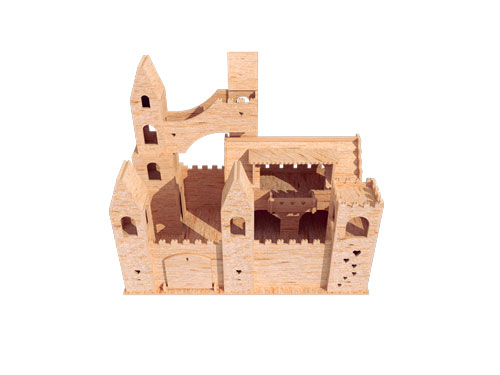On Sale Now!
Little Princess Fairytale Series
The Sleeping Beauty Castle
A makeCNC Original 3D Puzzle
This is a Very Amazing Puzzle with Some Finely detailed work in it!
ALL DOWNLOADABLE PRODUCTS ARE AVAILABLE INSTANTLY AFTER PAYMENT!
Ready to cut downloadable Patterns and Projects for your CNC Router, Milling Machine, Plasma Cutter or Laser Machine and Scroll Saw in both Imperial Inch format as well as Metric size for the Global CNC Hobbyist.
Files include a Full Color Assembly Manual Copyright makeCNC!
Buy one: Collect them All! Impress your friends and family or make some extra cash with your CNC machine with your own product line at flea markets and craft shows!
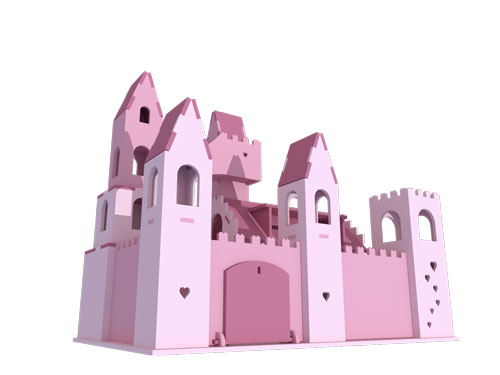
The Sleeping Beauty Castle
"The Sleeping Beauty" ("The Beauty sleeping in the Wood") by Charles Perrault or
"Little Briar Rose" by the Brothers Grimm is a classic fairytale involving a
beautiful princess, enchantment of sleep, and a handsome prince.
This fairy tale is classified as Aarne-Thompson type.
The princess's name has been unstable. In Sun, Moon, and Talia, she is named Talia
("Sun" and "Moon" being her twin children). Perrault removed this, leaving her
anonymous, although naming her daughter "L'Aurore". The Brothers Grimm named her
"Briar Rose" in their 1812 collection. This transfer was taken up by Disney in the
film, which also called her Aurora. John Stejean named her "Rosebud" in TeleStory
Presents.
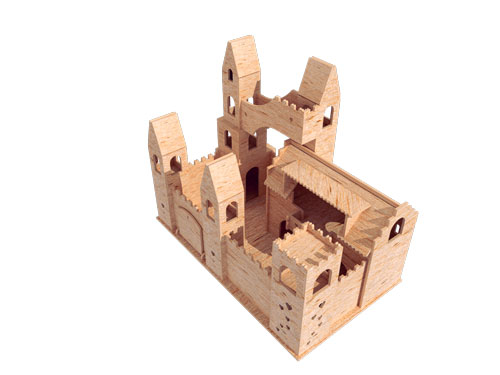
A castle is a type of fortified structure built in Europe and the Middle East during the Middle Ages by nobility. Scholars debate the scope of the word castle, but usually consider it to be the private fortified residence of a lord or noble. This is distinct from a palace, which is not fortified; from a fortress, which was not always a residence for nobility, and from a fortified settlement, which was a public defence – though there are many similarities among these types of construction. Usage of the term has varied over time and has been applied to structures as diverse as hill forts and country houses. Over the approximately 900 years that castles were built they took on a great many forms with many different features, although some, such as curtain walls and arrowslits, were commonplace.
A European innovation, castles originated in the 9th and 10th centuries, after the fall of the Carolingian Empire resulted in its territory being divided among individual lords and princes. These nobles built castles to control the area immediately surrounding them, and were both offensive and defensive structures; they provided a base from which raids could be launched as well as protection from enemies. Although their military origins are often emphasised in castle studies, the structures also served as centres of administration and symbols of power. Urban castles were used to control the local populace and important travel routes, and rural castles were often situated near features that were integral to life in the community, such as mills and fertile land.
Many castles were originally built from earth and timber, but had their defences replaced later by stone. Early castles often exploited natural defences, and lacked features such as towers and arrowslits and relied on a central keep. In the late 12th and early 13th centuries, a scientific approach to castle defence emerged. This led to the proliferation of towers, with an emphasis on flanking fire. Many new castles were polygonal or relied on concentric defence – several stages of defence within each other that could all function at the same time to maximise the castle's firepower. These changes in defence have been attributed to a mixture of castle technology from the Crusades, such as concentric fortification, and inspiration from earlier defences such as Roman forts. Not all the elements of castle architecture were military in nature, and devices such as moats evolved from their original purpose of defence into symbols of power. Some grand castles had long winding approaches intended to impress and dominate their landscape.
Collect your Sleeping Beauty Castle Today!
(Exclusive to makeCNC)
Patterns may be scaled to the size you require for your material thickness using our Scale Calculator
CNC Routers Users ! Please See our Tutorial for information on dealing with Inside Corners and Dogbone Fillets
Each Zip File Includes:
2 or 4 CDR Files - Sizes you receive Depend on individual Product - usually in 1-8 and 3 mm and/or 1-4 and 6 mm Versions (Corel Draw Format for Laser)
2 or 4 DXF's - Sizes you receive Depend on individual Product - usually in 1-8 and 3 mm and/or 1-4 and 6 mm Versions (For Most CAD Programs)
2 or 4 SVG - Sizes you receive Depend on individual Product - usually in 1-8 and 3 mm and/or 1-4 and 6 mm Versions (Opens in Many CAD & Drawing Programs)
Printable PDF Pattern (For Scroll Saw Use)
1 X Clear and Concise Color Assembly Manual.
1 X Number Guide DXF (Also called Coded DXF - NOT in all Products - Only in Certain Products)
1 x Readme File and Copyright Information
1 X Product Notes - Letting you know an Approximate Height, Length and Width of your finished product and giving the Approximate Size of the Largest Part. These Approximations are given in Imperial and Metric. Remember, These are Approximate Sizes.
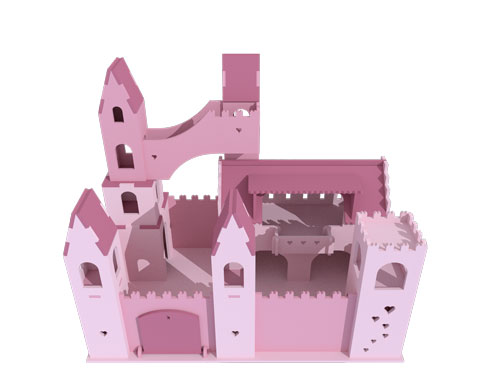
Approximate Size at 3mm
L= 381
W = 160
H = 330
Approximate Size at 1/8 inch
L = 15
W = 6.3
H = 13
Approximate Size of Largest Part
6.3 X 7.5 inches
160 X 191 mm
Approximate Part Number: 79
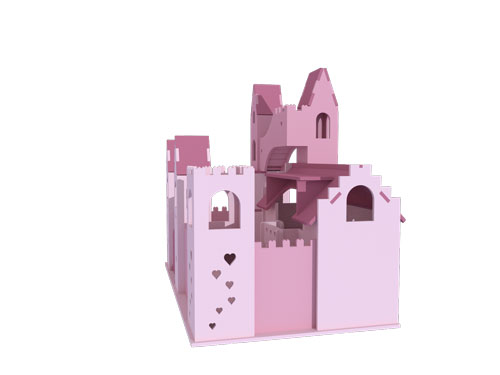
NOTE: Our 3D Puzzles can be built in different thicknesses.
Example: 1/8" uses 1/8" Plywood...1/4" uses 1/4" Plywood, etc.
As a rule, although the slots are set to fit the same sized tool, most
people will use a smaller bit size when cutting.
All the hard work is done!
Makecnc is excited to bring to the CNC hobbyist a new and ever-expanding library of art and projects made ready-to-cut on your CNC machine!
You can either sell the cut out projects as your own product or assemble them for your own enjoyment and to give as gifts to your family and friends.
When you purchase a makeCNC pattern you are agreeing to our Copyright Terms. Please Click on the Link Below to View them! Thank You!
PLEASE READ: Here: COPYRIGHT TERMS
